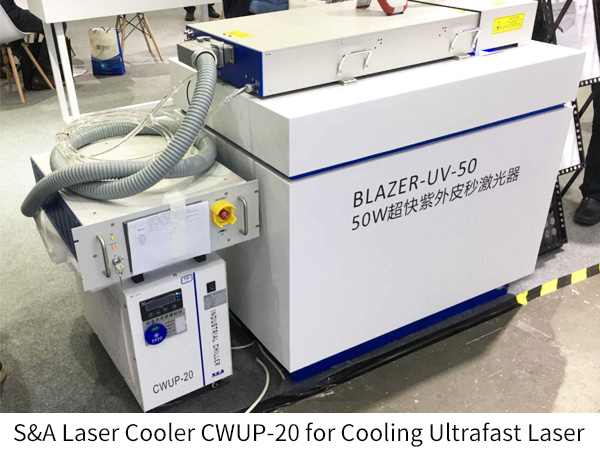
Fons laseris pars clavis omnium systematum lasericorum est. Multas diversas categorias habet. Exempli gratia, laser infrarubrum longinquum, laser visibilis, laser radiorum X, laser ultraviolaceum, laser ultravelox, et cetera. Hodie autem, praecipue in laser ultraveloci et laser ultraviolaceo intenti sumus.
Dum technologia laserica pergit evolvere, laser celerrimus inventus est. Is singulariter brevissimus impulsus habet et altissimam intensitatem luminis maximam cum potentia impulsuum relative parva consequi potest. Dissimilis laseribus pulsatilibus traditis et laseribus undae continuae, laser celerrimus impulsus laser brevissimos habet, quod ad latitudinem spectri relative magnam ducit. Problemata quae methodis traditis difficulter solvuntur solvere potest et facultatem processus, qualitatem et efficaciam mirabilem habet. Paulatim oculos fabricatorum systematum lasericorum allicit.
Laser celerrimus sectionem puram efficere potest nec circumstantias areae sectae laedit, margines asperos formans. Quapropter, perutilis est in vitro, sapphiro, materiis calori sensibilibus, polymeris, et cetera tractandis. Praeterea, etiam munus magnum agit in chirurgia quae praecisionem altissimam requirunt.
Continua technologiae lasericae renovatio iam effecit ut laser ultravelox e laboratorio "egressus" sit et in sectores industriales et medicos penetraverit. Successus laseris ultravelocis in eius facultate nititur energiam lucis intra gradus picosecundorum vel femtosecundorum in area minima dirigendi.
In regione industriali, laser celerrimus etiam aptus est ad metallum, semiconductores, vitrum, crystallum, ceramicas et cetera tractanda. Materiis fragilibus, ut vitrum et ceramica, earum tractatio requirit maximam praecisionem et accuratam qualitatem. Et laser celerrimus hoc perfecte facere potest. In regione medica, multa valetudinaria nunc chirurgiam corneae, chirurgiam cordis et alias chirurgias difficiles perficere possunt.
Usus praecipuus laseris UV investigationem scientificam et apparatum fabricationis industrialis comprehendit. Interea, late adhibetur ad technologiam chemicam et apparatum medicum, necnon ad apparatum sterilizandum qui radiationem lucis ultraviolaceam requirit. Laser UV DPSS, fundatus in crystallo Nd:YAG/Nd:YVO4, optima electio est ad micromachinationem, itaque latam applicationem habet in processu PCB et electronicarum copiarum.
Laser UV longitudinem undae et latitudinem impulsuum brevissimam necnon M2 humilem habet, ita ut punctum lucis laseris magis definitum creare et minimam zonam caloris afficientem servare possit, ut accuratiorem micro-machinationem in spatio relative parvo efficiat. Magna energia a lasere UV absorbens, materia celerrime vaporari potest. Ita carbonizatio minui potest.
Longitudo undae emissae laseris UV infra 0.4μm est, quod laserem UV optimam electionem ad polymerorum tractationem facit. Dissimilis tractationi lucis infrarubrae, micro-machinatio laseris UV non est tractatio caloris. Praeterea, pleraeque materiae lucem UV facilius quam lucem infrarubram absorbere possunt. Ita polymerum.
Praeterquam quod notae externae sicut Trumpf, Coherent et Inno mercatum pretiosum dominantur, fabri domestici laserium UV etiam incrementum faustum experiuntur. Notae domesticae sicut Huaray, RFH et Inngu quotannis maiores et maiores venditiones consequuntur.
Sive laser ultravelox sive laser UV sit, ambo unum commune habent - praecisionem magnam. Haec praecisio magna haec duo genera laserum tam popularia in industria exigente efficit. Attamen mutationibus thermalibus valde sensibilia sunt. Parva fluctuatio temperaturae magnam differentiam in effectu processus faceret. Refrigeratorium laseris accuratum sapiens consilium esset.
S&A Refrigeratoria laserica seriei Teyu CWUL et CWUP specialiter ad refrigerandos laseres UV et laseres celerrimos respective designata sunt. Stabilitas temperaturae eorum usque ad ±0.2℃ et ±0.1℃ pervenire potest. Haec magna stabilitas laserem UV et laserem celerrimum in ambitu temperaturae valde stabili servare potest. Iam non debes sollicitari de mutatione thermali functionem laseris afficiente. Pro pluribus informationibus de refrigeratoriis lasericis seriei CWUP et seriei CWUL, preme https://www.chillermanual.net/uv-laser-chillers_c4.











































































































